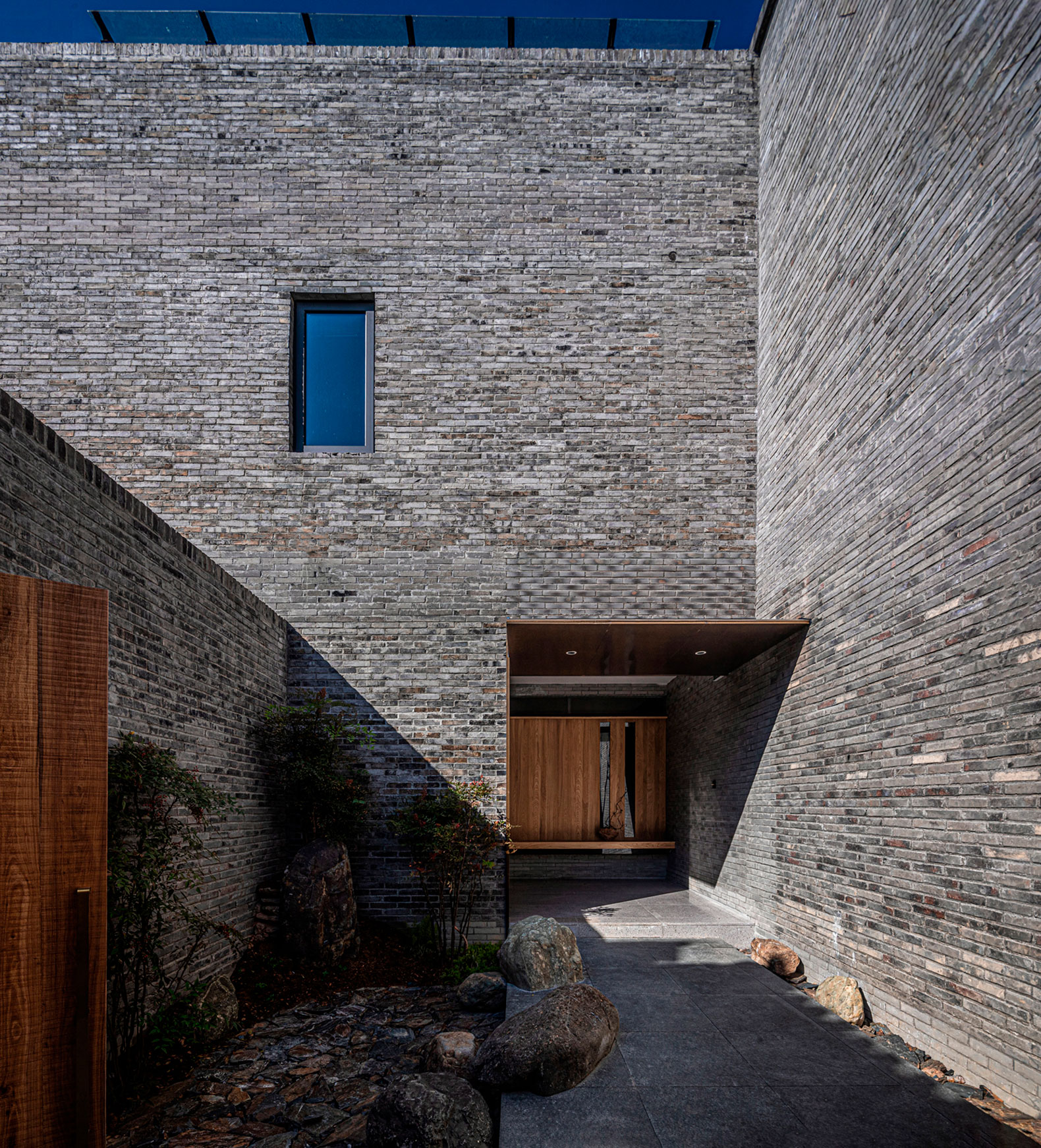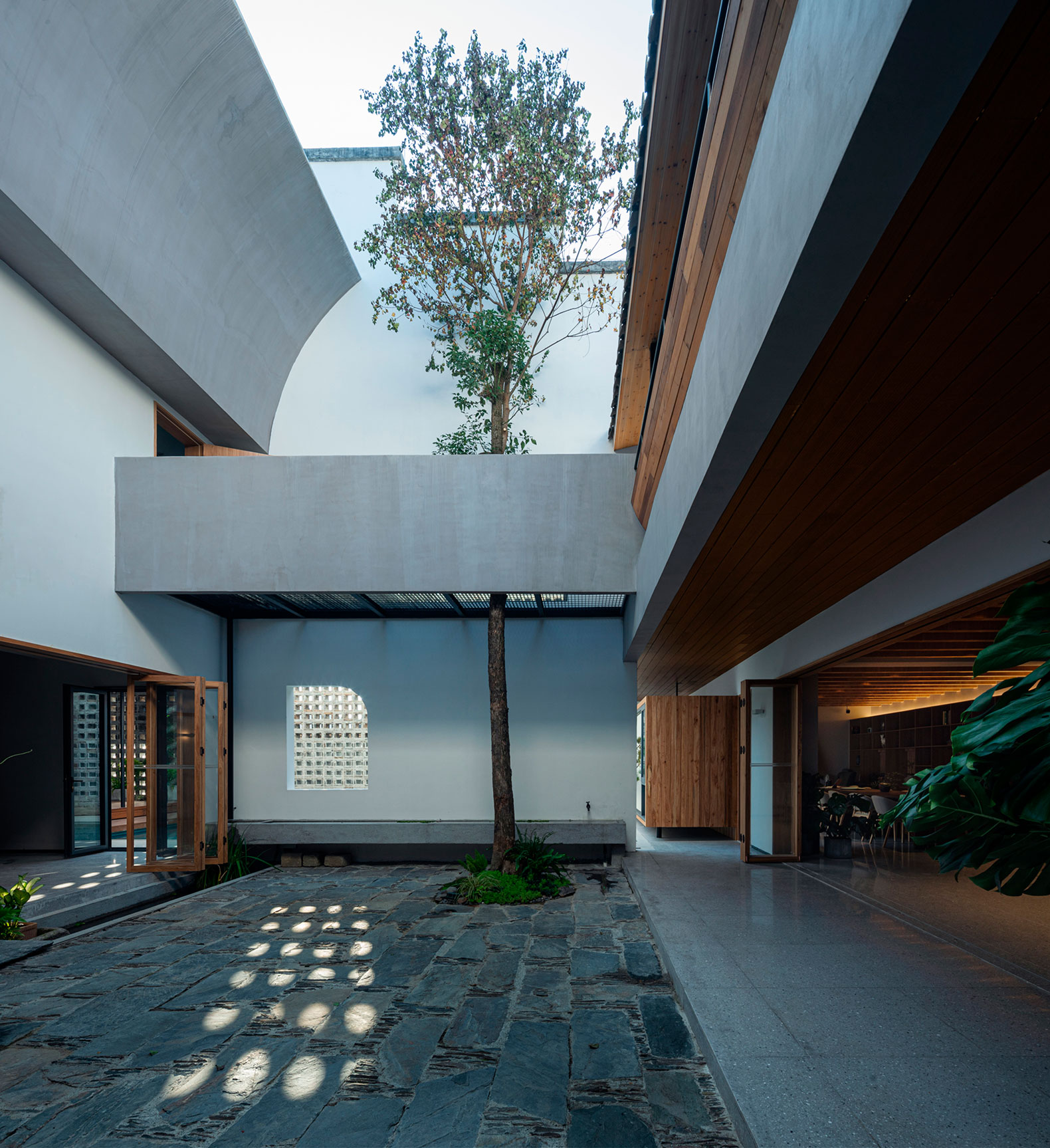Project description by y.ad studio
A secluded haven nestled in a centuries-old village, integrated into everyday life
Nestled within the heart of a village steeped in rich history and culture, the project site is dominated by traditional Anhui-style residences dotting the landscape. These unique dwellings are a blend of old and new, with some having been built centuries ago during the Ming and Qing dynasties, while others have been recently constructed, reflecting a more contemporary style. Since the hotel is deep inside the village, one must meander through the narrow and winding lanes of the village to reach this hidden gem.
During my initial survey of the site, I faced some challenges such as the unavailability of direct access for vehicles, uneven terrain, limited space, and less-than-ideal scenery.
However, as I stood in the area, I found myself captivated by the picturesque surroundings - the gray tiles, white walls, and stacked stepped gables. The distant smoke of cooking, the sounds of conversations, and the aroma of food created a unique atmosphere. This experience inspired me to put aside my preconceived notions and embrace the site's inherent beauty. I envisioned integrating the building into the village, creating a secluded space that harmonizes with its surroundings while offering a stark contrast to the surrounding vibrant and diverse environment.
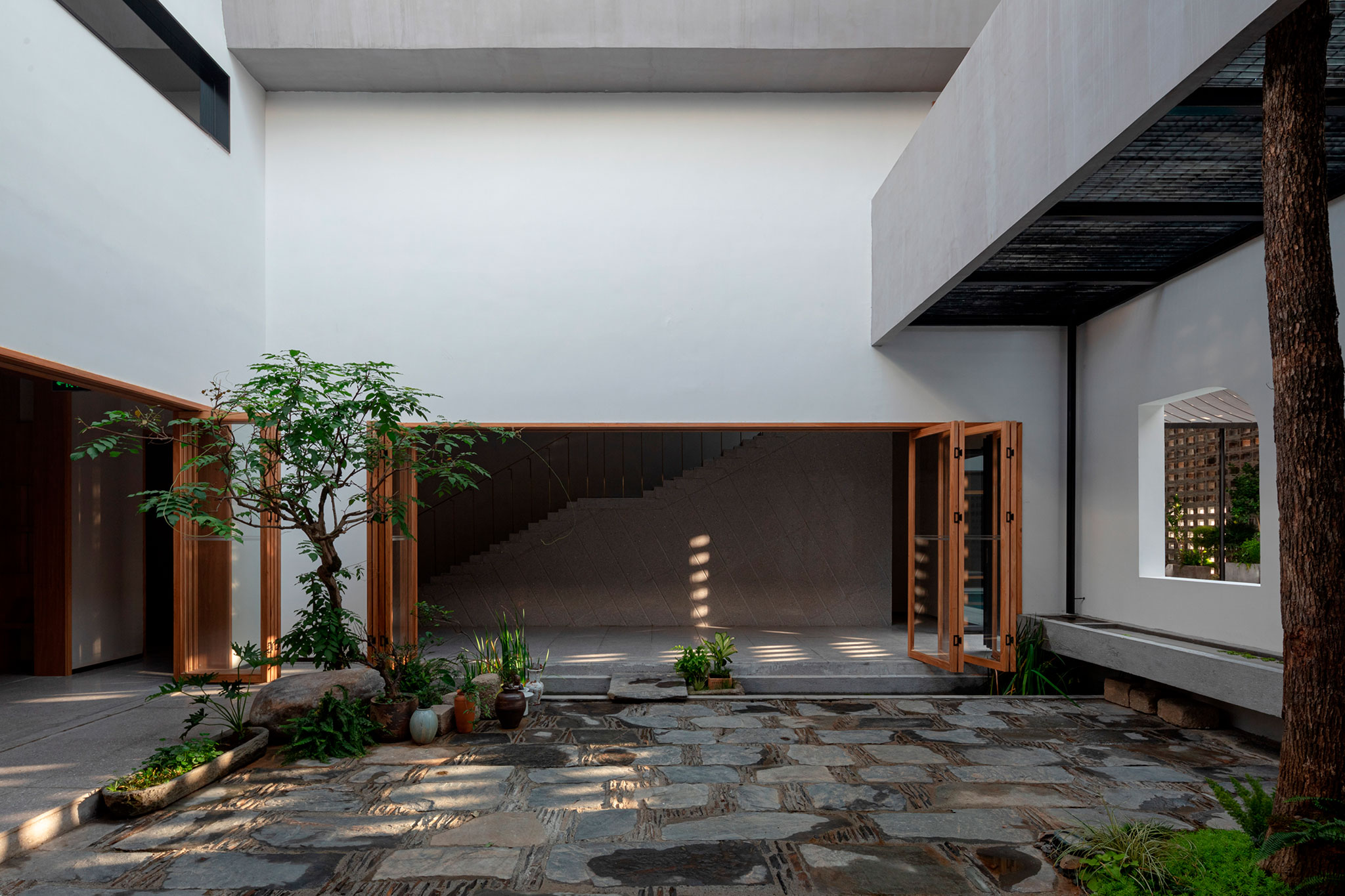
Yiyun · Bishan Hotel by y.ad studio. Photograph by SCHRAN.
Discover order from a disorderly condition
The architectural fabric of traditional Chinese villages is shaped by unplanned natural development and historical influences, resulting in a disorderly yet vibrant condition. The project site is no exception, which has a crooked and irregular terrain.
Initially, the compact site posed challenges as it seemed to lack "view" or "space" for a building block, with low utilization rates. However, after careful consideration, the idea of creating an introverted space with a touch of Chinese garden thinking emerged. The goal was to isolate the building from the surrounding environment, creating a pure and tranquil interior space within a complex enclosed structure.
While the initial plan was to create a modern building in stark contrast to the surrounding structures, the local authority required the incorporation of Hui-style architectural elements to preserve the ancient style and features of Bishan Village. Rather than simply replicating a traditional Hui-style building that fails to meet contemporary lifestyles, we envisioned a building that inherits the spiritual core of Hui-style architecture, integrating traditional architectural elements with modern forms and lifestyles.
The design strategy remained mostly unchanged. On the premise of satisfying functionality, we preserved the century-old tree and the ancient well, incorporating courtyards and patios into each building block, and embedding courtyards in the spaces between blocks. This approach not only offered a rich visual experience in the interior but also facilitated a seamless transition between the inside and outside of the buildings and a harmonious connection with nature.
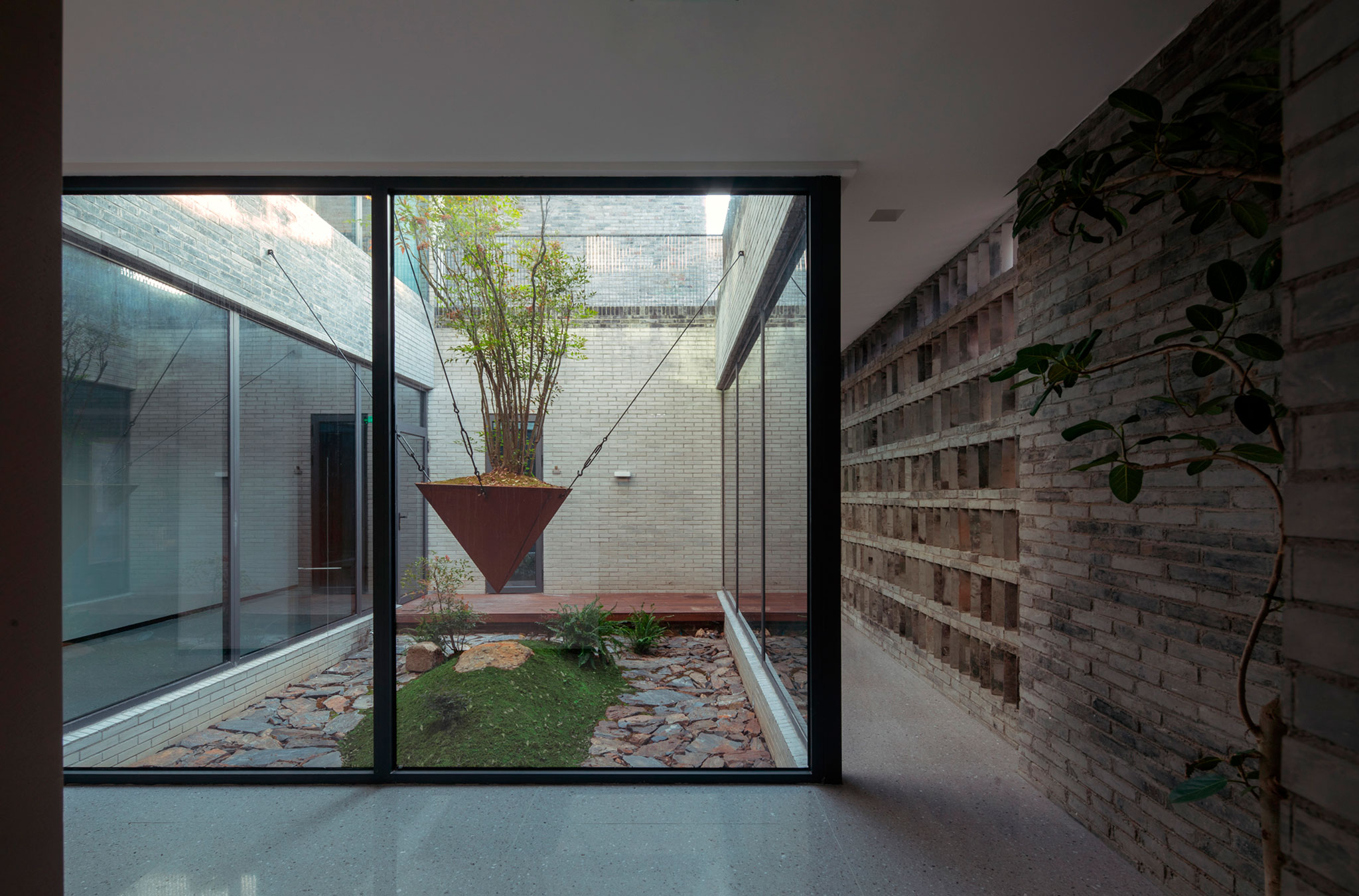
Yiyun · Bishan Hotel by y.ad studio. Photograph by SCHRAN.
Dynamic visual experience
Regarding the circulation design, we carefully incorporated turns and transitions, trying to offer varying scenes with each step by considering the rhythm of space, the flow of people, and the visiting experiences. As guests walk through the space, whether moving forward, pausing, upstairs or downstairs, they can encounter diverse sentiments and experiences that respond to "space", "time" and "emotion", allowing guests to perceive the diversity and richness of the space.
Unlike conventional layout design, the public living room and reception area were placed at the center of the building, which extended and radiated all around. The entrance leads to a dooryard, then to the wall of the foyer. Subsequently, guests need to pass through the swimming pool, stairs, and inner courtyard before reaching the reception area. The route was designed for guests to organize their thoughts and adjust their mindset along the way. The short but undefined walkway aims to evoke a sense of novelty, stimulating curiosity and encouraging exploration. Entering such a meaningful space after passing through the intricate country lanes outside elicits a special contemplation and inner joy.
The experience culminates on the rooftop terrace and in the observation tower, transitioning from a remote and profound space to a suddenly open broad view. From these vantage points, guests can overlook distant mountains, observe the inner courtyard, and gaze down at the rooftops. Through this sequence of spatial dimensions, visual fields, varied distances, and inward and outward design elements, guests are offered a dynamic visual experience.
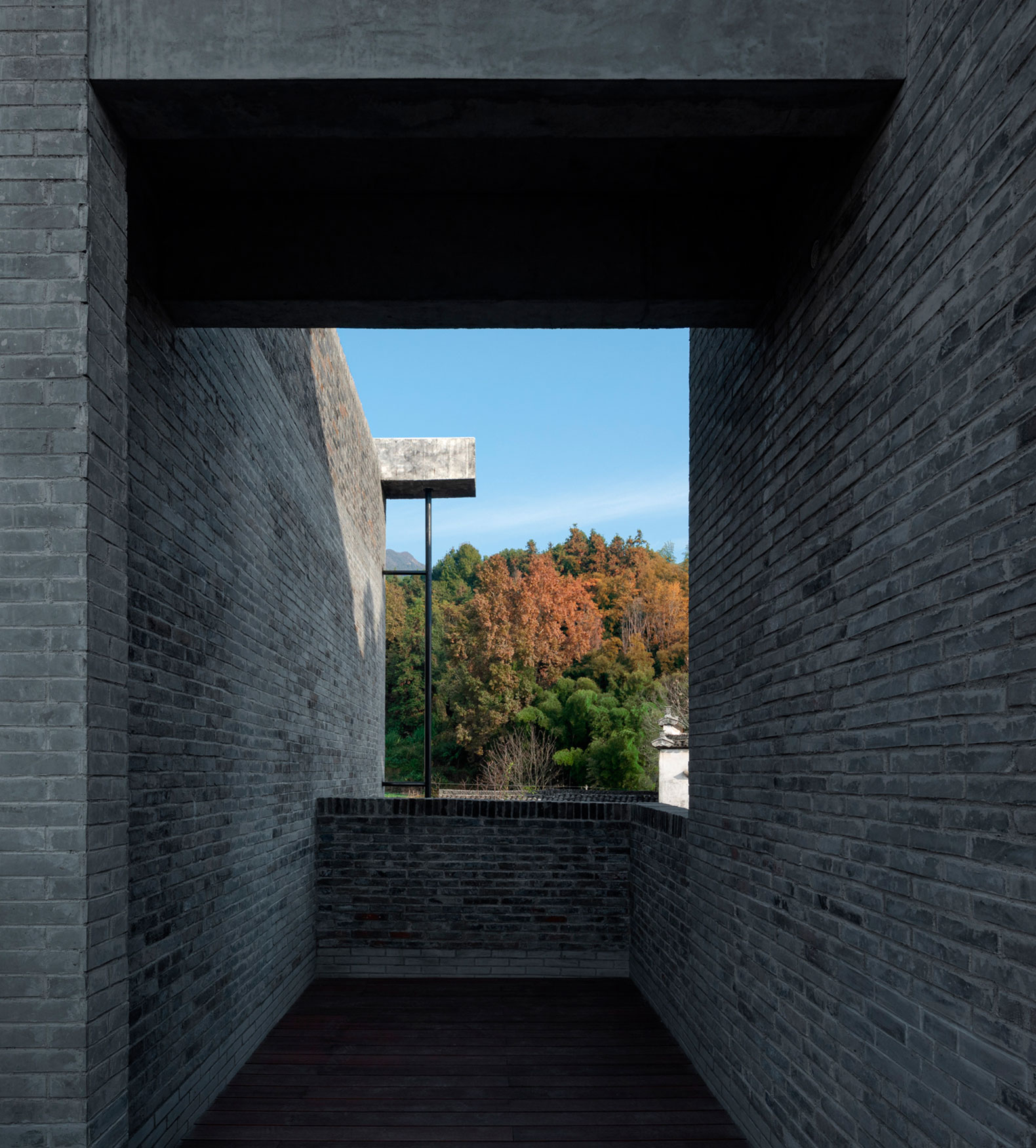
Yiyun · Bishan Hotel by y.ad studio. Photograph by SCHRAN.
Create scenery inside and borrow scenery from the outside
We intended to avoid interference between the activities within the building, the environment, and the neighborhood, striving to achieve harmony and symbiosis between them. To ensure that the guests and the surrounding villagers are undisturbed by each other, we have designed an introverted layout that isolates the building from the outside world.
The building walls adjacent to the surrounding residential area nearly have no windows, and inner courtyards and patios are utilized to create pleasant views and interaction with nature. In spaces where windows are necessary but privacy is a concern, we used visual dislocation approaches such as high or low windows to maintain privacy while allowing light and ventilation. Each window was designed as a viewing frame to introduce the lush greenery in the courtyard and the mountains in the distance.
Additionally, we made efforts to create unique and pleasant views from every room, allowing guests to enjoy the surrounding scenery by standing by the window. By borrowing landscape from the remote and nearby sceneries from different angles at appropriate times, the design approach results in a tranquil, elegant, and relaxing ambiance.
We aimed to create a living and hospitality experience that goes beyond mere functionality, offering a venue to experience surprises, fun, artistic space conception, and sentiments. We strived to provide a space that allows people to find purity in complexity, feel tradition in contemporary times, and immerse in tranquility amidst the hustle and bustle, while also experiencing "uncertainty" and "surprise" in an unchanging realm.
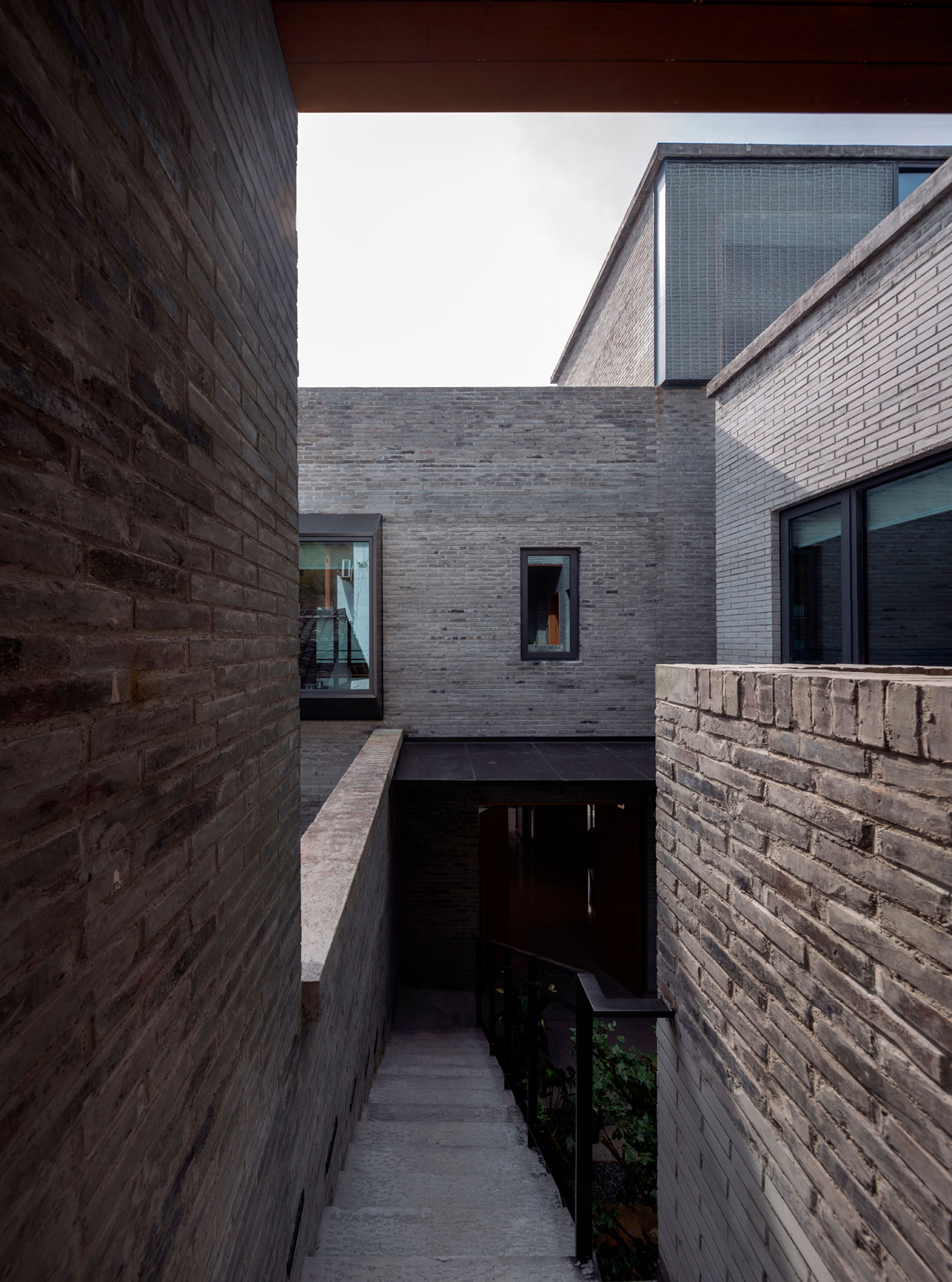
Yiyun · Bishan Hotel by y.ad studio. Photograph by SCHRAN.
Symbiosis and rebirth
The 200-year-old magnolia tree on the site is an exotic species transported from Shanghai by a businessman in the village. The existing ancient well has been preserved and integrated into the building, aiming to retain memories of the past while growing with the site.
In the Huangshan area, stepped gables are ubiquitous and symbolize Hui-style architecture. As an architect, I'm not inclined to incorporate historical elements into new buildings, because I believe that new buildings should focus on the superimposing of contemporary methods rather than replicating past practices. We value the blend of modernity and tradition, conforming to the life and aesthetics of contemporary people. As a result, our focus is on shaping the space to align with modern living habits and aesthetics, using contemporary language and form to connect and inherit the heritage while making some changes to achieve a state of symbiosis. The goal is to capture the spiritual essence and iconic identity of the building harmoniously.
Taking into consideration its versatility and compatibility, gray bricks were used as the main building material to blend with the surrounding traditional buildings, complemented by glass bricks to create a light and modern visual sense, eliminating the heaviness of the gray bricks, and adding a different look and feel.

Yiyun · Bishan Hotel by y.ad studio. Photograph by SCHRAN.
Make stories happen in space
The space not only meets the practical needs of living but also fosters a sense of spirituality and relaxation. The spatial narrative allows for stories to happen and enhances the social and communicative functions through scenography and people's activities. The inspiring design encourages interaction and communication among people, making it more than an accommodation for vacations. The tea rooms, book cafes, and restaurants were transformed into an open and flexible "living room for communication". Guests are encouraged to watch movies in the public space since there is no TV in the guest rooms, guiding them to embrace social interactions.
In addition, amenities such as swimming pools, BBQ areas, terraces, and observation towers were designed to promote diverse social interactions.
While emphasizing communal spaces, we also recognize the importance of providing space for solitude and harmonious coexistence with others. Each room maintains relative independence and privacy, and a quiet and secluded rooftop greenhouse was designed for moments of tranquility. In this way, the public social space of the building can grow both inwards and upwards.
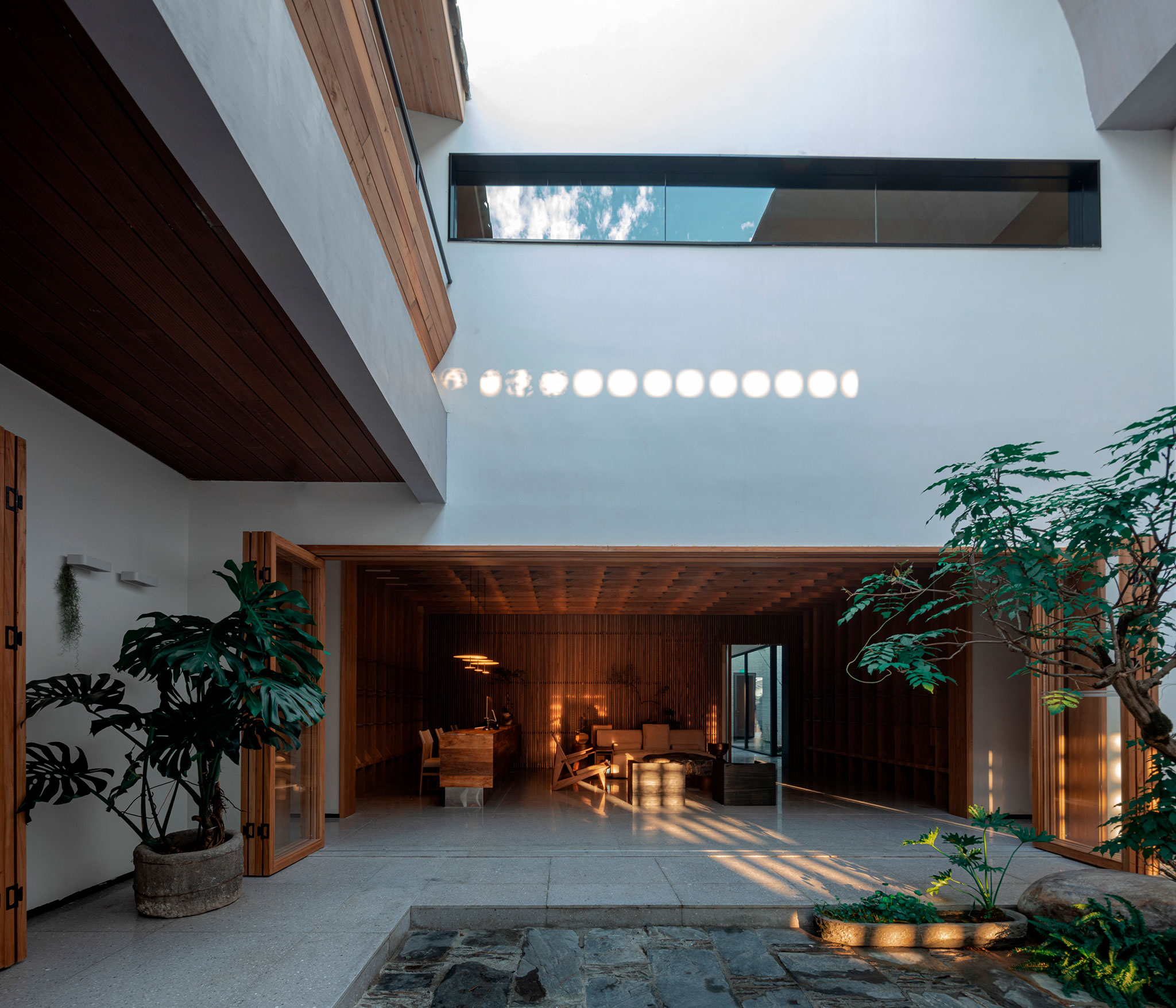
Yiyun · Bishan Hotel by y.ad studio. Photograph by SCHRAN.
Let light, shadow and space interweave into poetry
Light plays a crucial role in shaping architectural space, creating visual effects through the interplay of light and shadow. From a certain perspective, light is a sort of architectural material. In our architectural practice, we focus on introducing and shaping light to enrich the space with poetry, sentiments, and artistry by injecting light and shadow. We also aim to evoke a sense of time and space through the changing light and shadows.
Courtyards and patios remain integral to our design, ensuring ample indoor lighting by strategically separating building blocks. We utilized elements such as glass brick walls, skylights, and variously shaped grilles to introduce light to create diverse spatial atmospheres. The dynamic interplay of light and shadow within these spaces evokes a sense of time and inspires contemplation.
